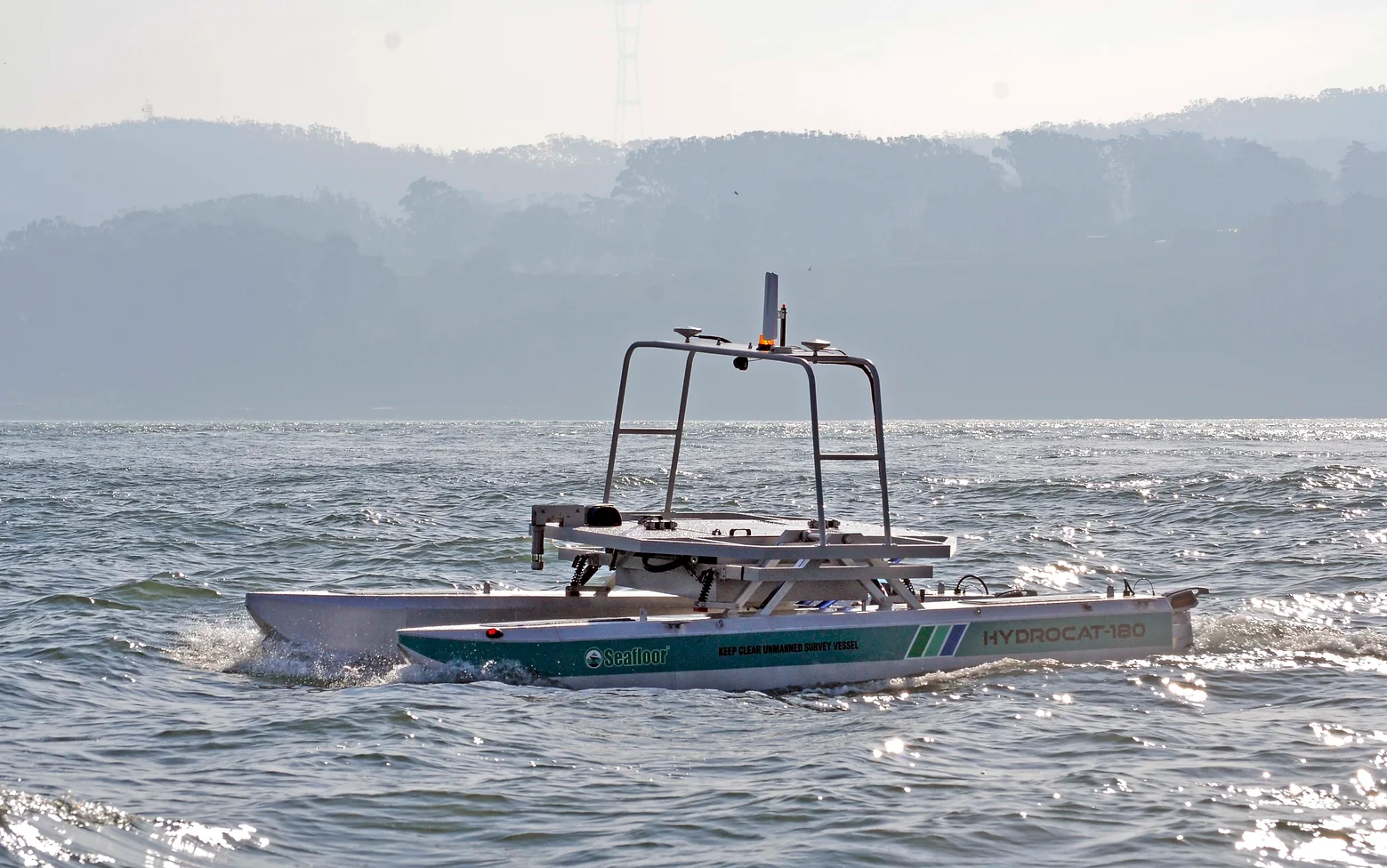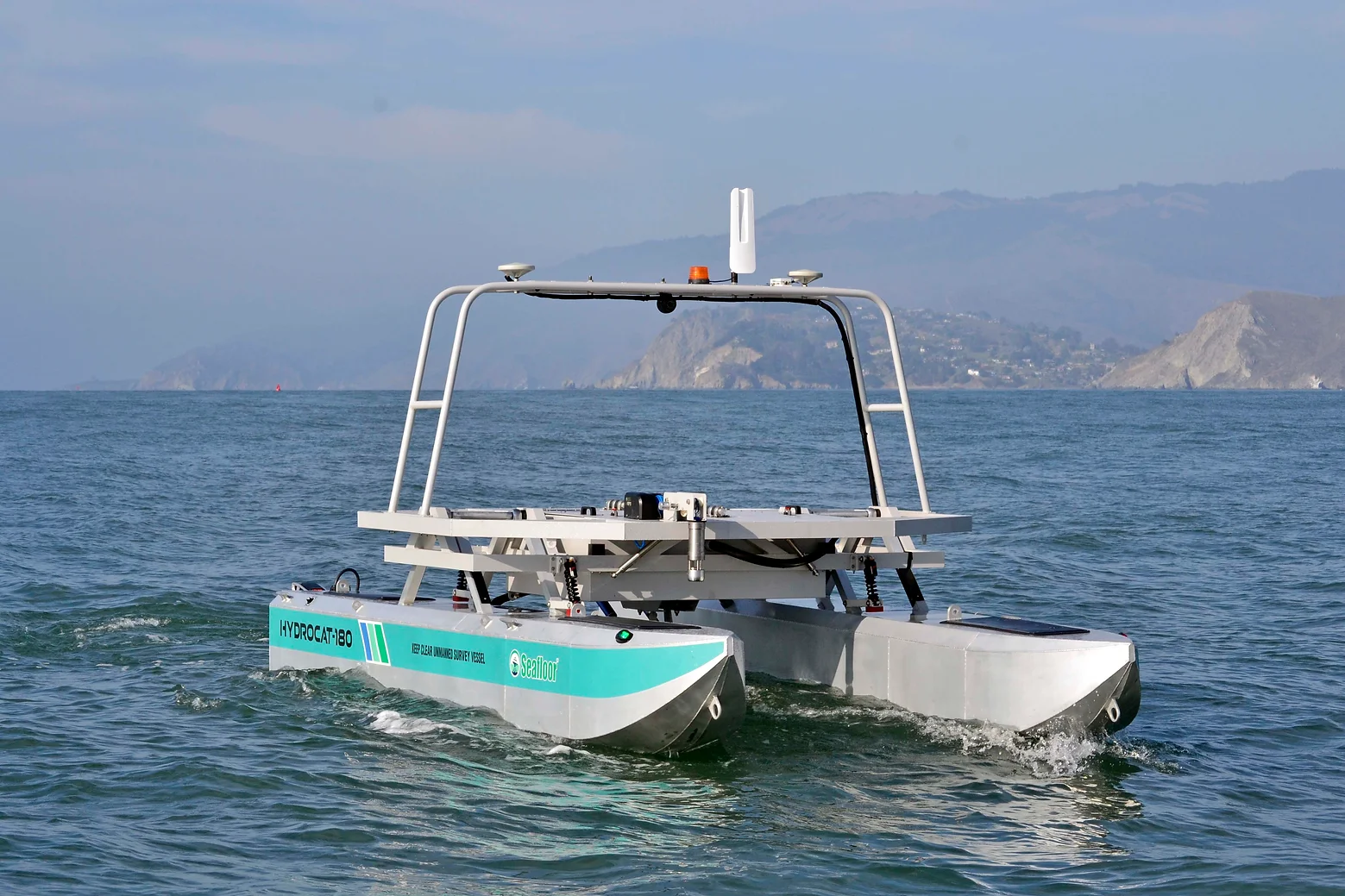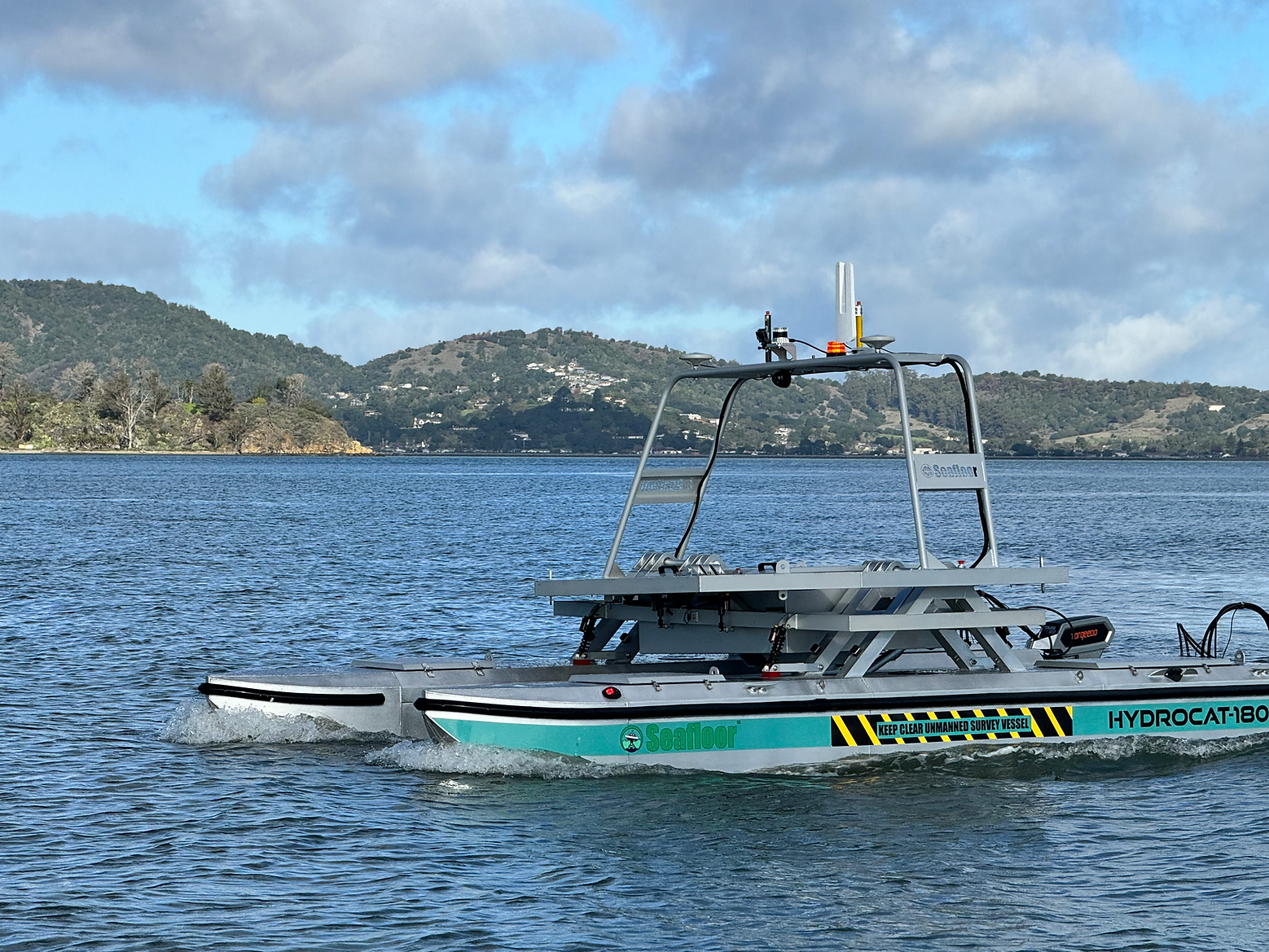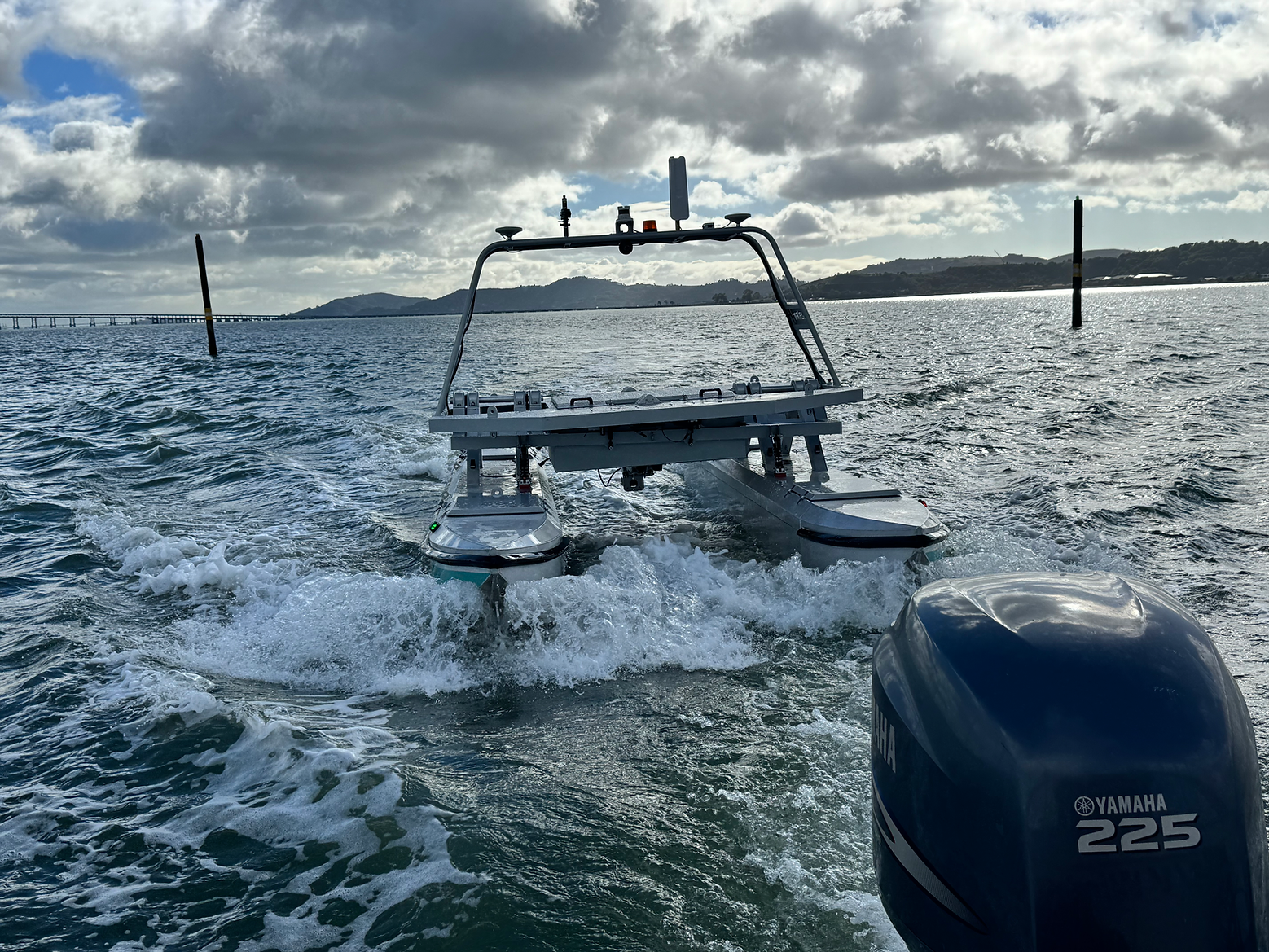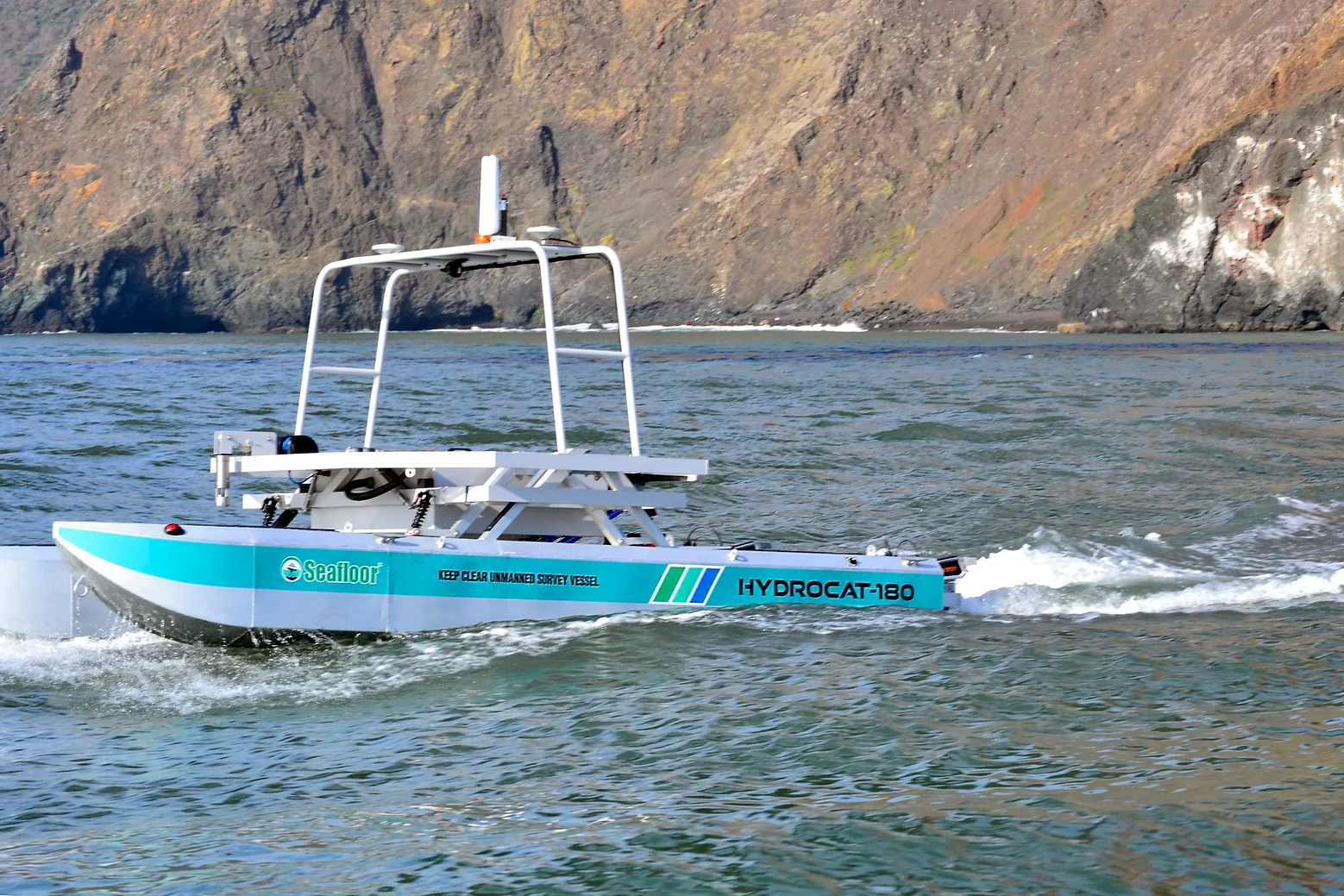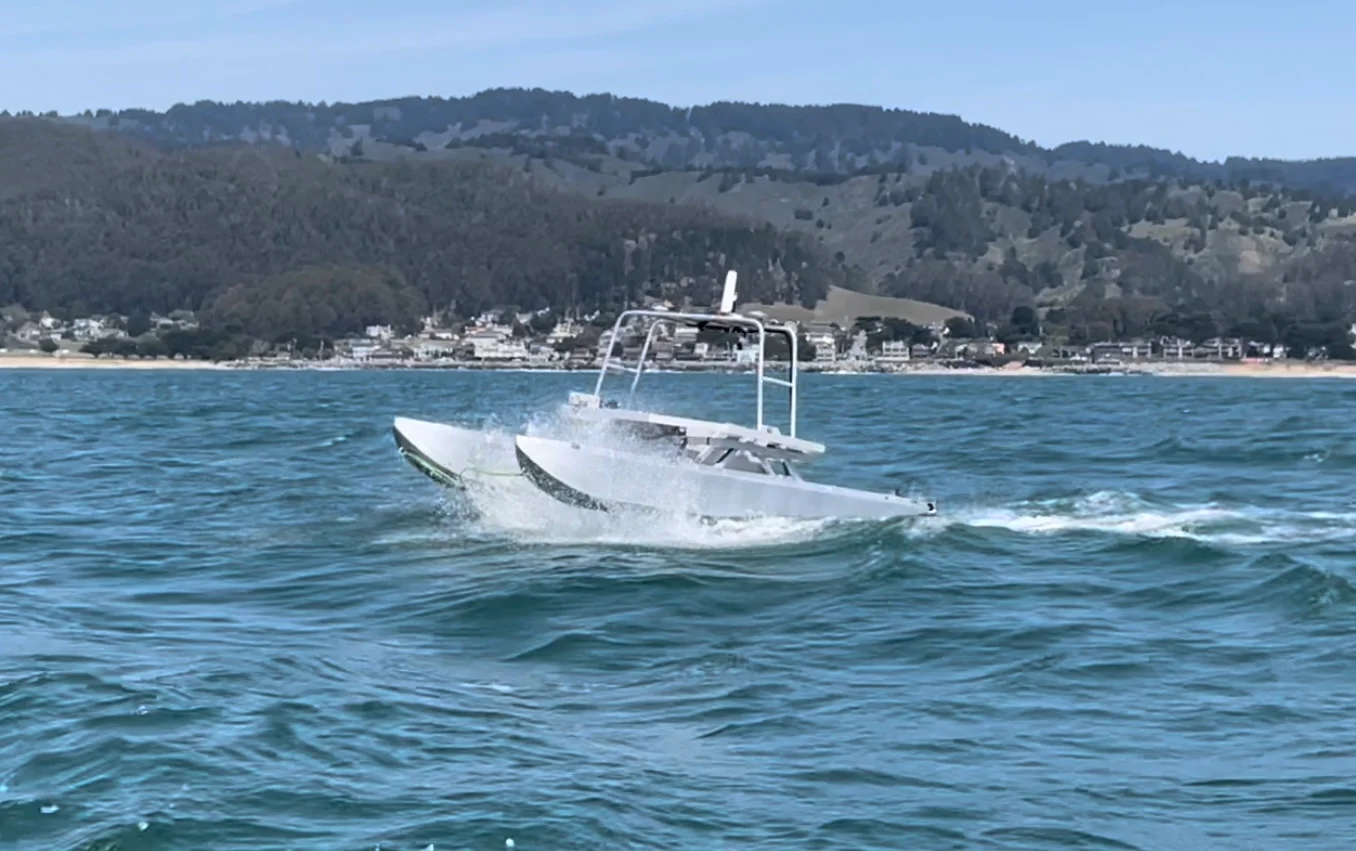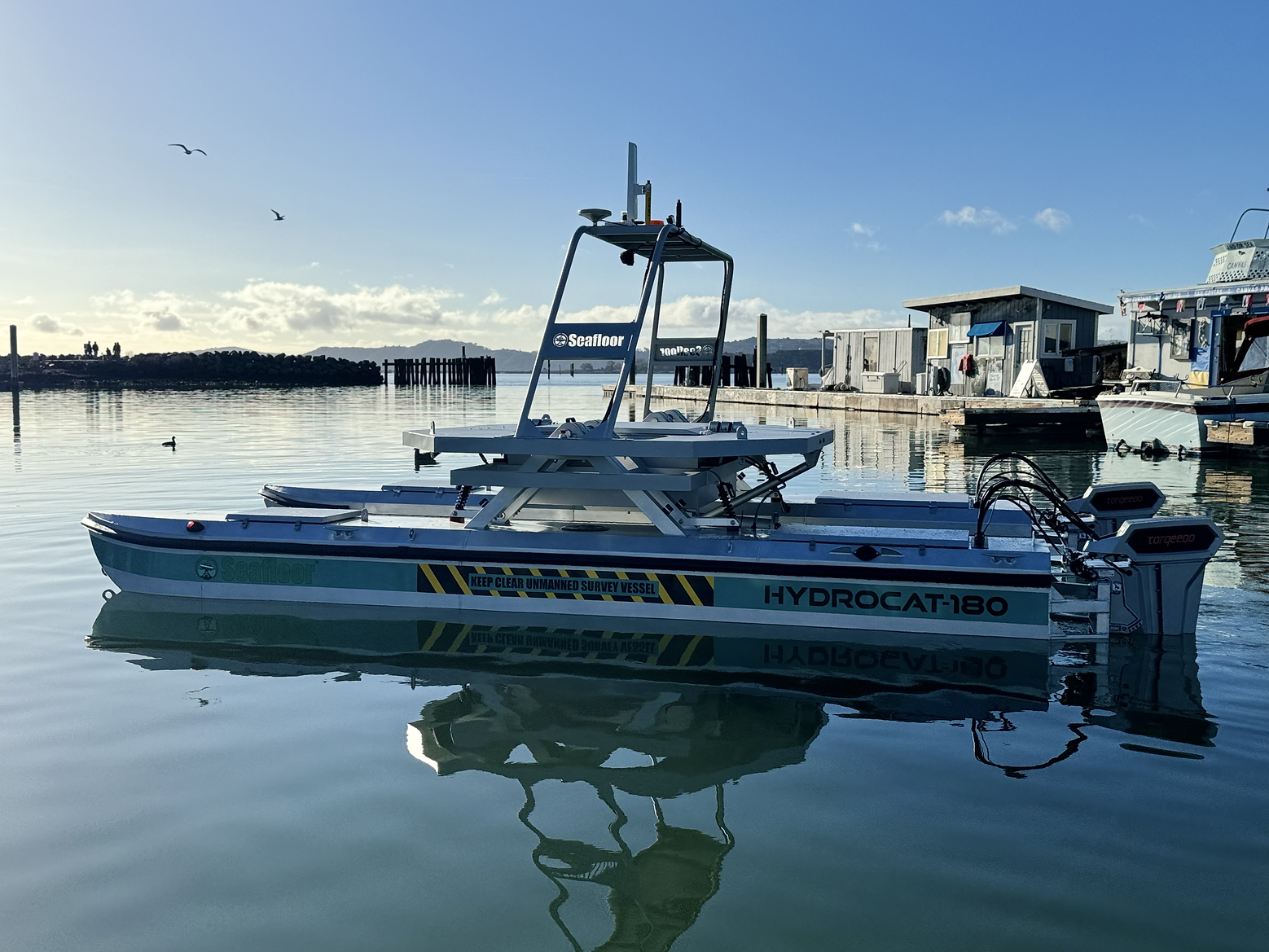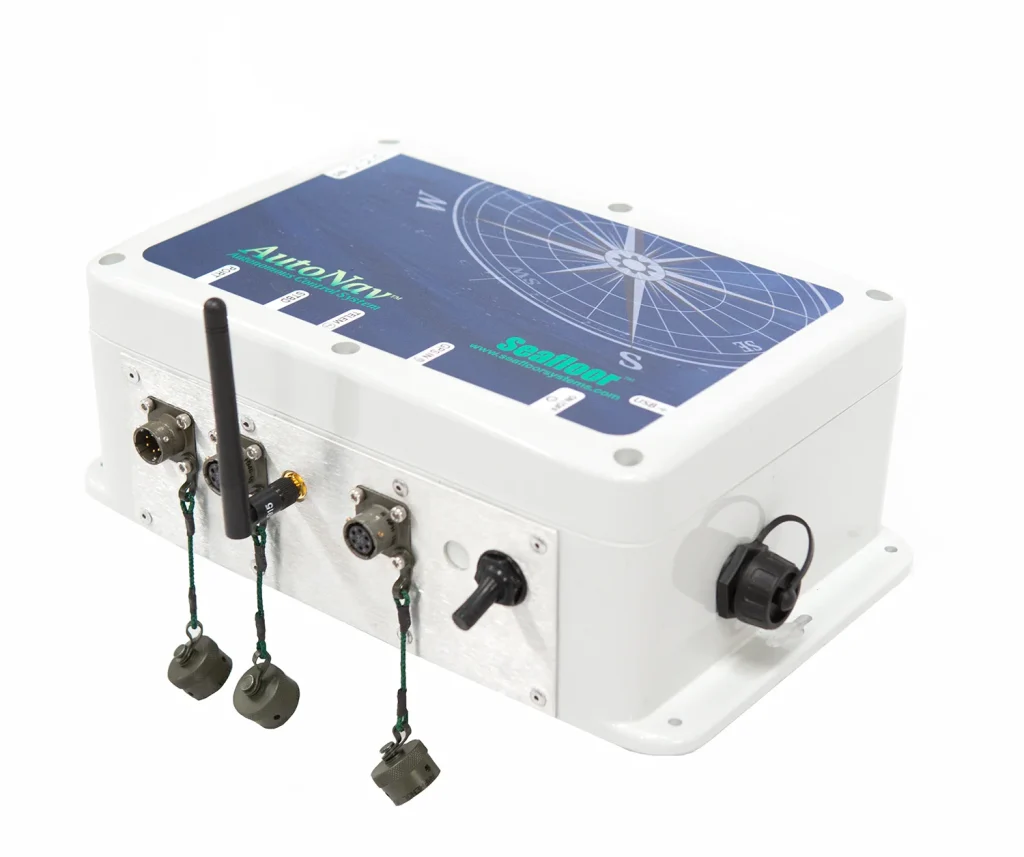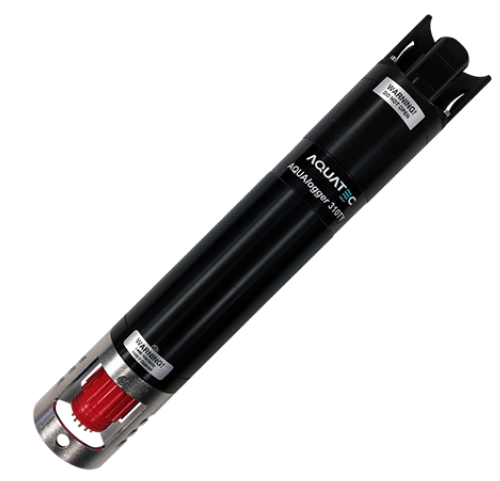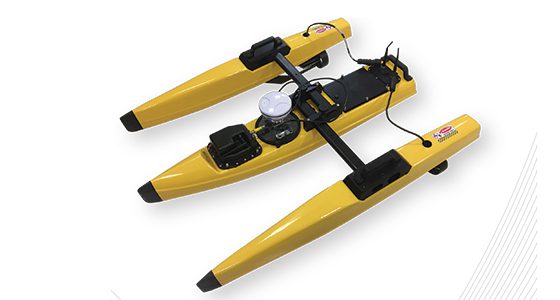BlueZone partners with over 50
world-leading original equipment
manufacturers and systems providers
HydroCat™-550
Autonomous Hydrographic Survey Catamaran for Inshore and Nearshore
The HydroCat-550™ USV is capable of transiting from inshore to nearshore environments with high-resolution equipment payloads to conduct preplanned autonomous hydrographic surveys. The 5.5m (18ft) catamaran features individually-articulating pontoons, a gimballed deck, retractable sonar pole mount, and independently-actuated electric motors. The vessel can be transported via trailer, programmed to execute missions, and navigate up to sea state 5 conditions with its aluminum hull construction.
Key Features:
- Wifi Data Communication System
- Onboard Industrial PC
- Independent Roll & Pitch Damping / Control
- Gimballed Payload Bay (Actively Cooled)
- Remote-Controlled Sonar Deployment
Product Specifications:
- Length: 5.5m (18 ft)
- Width: 2.5m (8 ft)
- Overall Height: 2.3m (7.5 ft)
- Equipment Payload: 365 kgs (800lbs)
- Propulsion: Dual Electric Torqueedo Outboards
- Communication: Wifi Data Com System
- Computer: Onboard Industrial PC
- Default Battery Configuration: 4 Batteries
- Max Speed: 12 kn*
- Optimal Survey Speed: 2.5kn – 4.0kn*
- Can upgrade to additional batteries to extend survey operation endurance.
*Speed in ideal conditions. 4 to 18 hours operational endurance at survey speed or 1.5 hours operational endurance at max speed with default battery configuration.
Read More:
For more information on the HydroCat-550™ USV, contact the team at BlueZone.
Key Features
Up to 25-hour mission duration
Speeds up to 4.2 knots
Increased module payload capacity
Search and recovery
Hydrography
Deep sea mineral exploration
Marine & Fisheries research
Product Enquiry
Related products
The AutoNav™ autonomous control system lets users pre-program unmanned vessels to follow track lines when performing surveys. This increases data acquisition consistency and efficiency. With stable firmware and a redundant IMU...
Read moreThe new Aquatec AQUAlogger 310TY solves sediment measurements with turbidity to measurement to 10,000FTU (typical). Turbidity can be converted to suspended sediment concentration and the 310TY includes integral temperature and...
Read moreTeledyne OceanScience Z-Boat 1250
BlueZone Group is pleased to announce the launch of the newest Teledyne Oceanscience Z-Boat in their family of Remotely Operated Surface Vehicles, the Z-Boat 1250.
Read moreRelated Articles
Ahead of the Tide: BlueZone’s Landmark IndoPAC 2025 Showcase
Celebrating 25 Years of Sovereign Capability The Indo Pacific International Maritime Exposition stands as the region’s premier showcase for commercial maritime and naval defence innovation—bringing together leaders from defence,...
Read MorePartnering for Performance: BlueZone Supports Kraken Robotics in Advancing KATFISH Capability
BlueZone Group to become Kraken’s Australian Sales Representative, Enhancing Sovereign Support for Cutting-edge Synthetic Aperture Sonar Systems We are thrilled to announce BlueZone Group have signed an agreement...
Read MoreSeeByte and BlueZone Group Forge Strategic Alliance to Strengthen Australian Naval Capabilities
BlueZone Group is proud to announce our appointment as the official Australian representative for SeeByte, a UK-based leader in advanced maritime defence and uncrewed systems technology. This strategic partnership marks...
Read More
